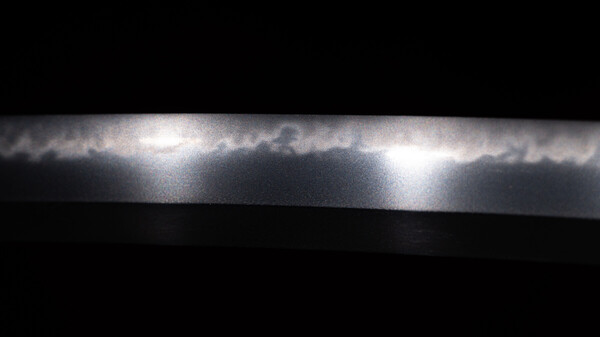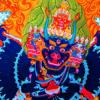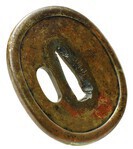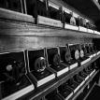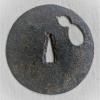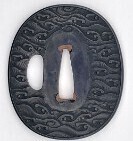Leaderboard
Popular Content
Showing content with the highest reputation on 12/28/2024 in all areas
-
Once upon a time this thread was about a tsuba….but became a pantomime. Boring and a pity.6 points
-
I've banned gold members before. I'm suspended them too. In fact I don't even look who is on what level when I react. You're not making this any easier for me. Off topic discussions about the discussion around off topic discussions? Not helpful.4 points
-
3 points
-
3 points
-
No worries Dee. We are an honest bunch here, The reason being for me. Don't like to see folks wasting their money on tsuba that will be difficult to sell in the future. Not preaching, just trying to be helpful. Cheers.3 points
-
3 points
-
Guido's collection was being broken up and sold by someone in Europe. Though Guido and I were not the closest of buds, I respected him a good deal and enjoyed some of our interactions. His wry sense of humor was an important part of the boardwalk that is NMB. His death has never been confirmed to me, but he isn't coming back to us. I've been low level angry about it in not feeling I was ever able to adequately pay my respects to his memory. Darcy and Ford have their place in the NMB pantheon, and I always felt Guido deserved his own little corner too. That is hard to do given how he went away at a time of transition (his moving Japan to Germany) and tumult (tail end of the Pandemic), yet it was never confirmed that he was truly gone.3 points
-
Something to share to end of this year Rai Kuniyuki is generally considered the founder of the Rai school. He worked at about the same time as Ayanokoji Sadatoshi and due to the similarity of some of their blades it is assumed that these swordsmiths collaborated No dated blade is known and the time of Rai Kuniyuki's work is estimated based on the signed and dated blades of Rai Kuniyoshi, who is believed to be his son The blade is a mumei, slender in shape with a nagasa of 68cm and represents the style of this smith's early work The Jigane is a tight and uniform ko-itame along the entire length of the blade with exquisitely bright ji-nie and delicate chikei throughout. The steel has a bluish color, typical of first-class Yamashiro blades The hardening is mostly deep nioi with fine ko-nie in kakubaru style with karimata pattern, which is well know for this swordsmith The blade has several kirikomi on the mune and muneyaki in the monouchi area The overall style of the blade is very similar to "Sakakibara Kuniyuki" which is a Juyo Bijutsuhin Enjoy2 points
-
Every item which is sent into the EU from other countries requires an import fee of at least 19%.2 points
-
2 points
-
2 points
-
2 points
-
Reminded of the saying that people see what they want to see, Its a free world, some folks even think the world is flat, even in this modern age. Dan, you are free to think what you want to think, just remember that folks wont always agree with you.2 points
-
Here's what Darcy had to say about daisho (minus the pics) Daisho A nice to have on everyone’s list… the daisho. The name literally means “big-small” and refers to the pair of swords that only a samurai was authorized to wear. There are some simple basics about daisho and some misconceptions. The learning curve is shallow but some people skip over the essentials, and it can cause some damage. Koshirae The first and most salient point is that daisho are about the koshirae. It does not matter what swords you put into a daisho, but once you have matching koshirae, you have yourself a daisho. The katana might be Kamakura period and the wakizashi might be Shinshinto, with 6 centuries difference in time, but they are still a daisho once they go into matching koshirae. Lose the koshirae and you have two independent swords again. Keeping with this thought that daisho are a koshirae thing, you can have daisho tsuba, daisho fuchigashira, daisho menuki and even a full set of daisho tosogu that have all the parts you need to create mounts for two blades. People have a misconception that daisho were usually swords made as pairs, and this does not bear out when we examine the NBTHK Juyo Token records. Rather we see evidence that these swords were all mixed and matched. The reasons for this are: Some lords provided a single sword to their samurai and he was expected to provide the other, so they got sourced from different supply. Desirability of a sword for use is highly individual, if you had a katana you really loved you might test several wakizashi to find one that you also really loved, in order to mount together. Love might be synonymous to “this blade feels great in my hand, and I feel good about defending my life with it.” What you may like out of one maker’s katana you may not be interested in with their wakizashi. Koto wakizashi from earlier than Muromachi might not be easily accessible as they usually depend on making a tachi suriage (unless you use a hirazukuri wakizashi or a naginata naoshi). So this makes matching a koto katana difficult. Some swords were assembled by theme as gifts, such as giving a Yukimitsu wakizashi along with a Masamune katana, to or from the Shogunate. In this case obviously some thought went into this to make the blades both Soshu school and with smiths that had a close relationship. But these seem to have been done like this more frequently than to match both blades together by the same maker. You could break one sword and then you’d get a replacement which you could afford, you liked, and you felt could defend your life, and the last item of worry would be matching the “swordsmith brand” of your other unbroken blade. There are however some swords that were made as a pair. These are very rare. Daisho Token Everyone tries this at some point, we try to get two matched blades by the same maker, so we can have our own daisho. These blades sometimes have passed their papers at different times, and we take this and construct mounts, find some matching tsuba and fuchigashira and boom, we have a daisho. It’s not a true daisho. True daisho were used by samurai in the Edo period. Unless you are a samurai with a time machine, what you just made is not a true daisho. At best, these… are what I call self-assembled daisho. Or an assembly. We can colloquially call them daisho but the important thing is to not mix them up with historical daisho. They are just expressions of a collector showing some love for his swords and assembling them so that he has something that makes him happy. Sometimes a collector looks carefully and finds two blades with similar signatures by the same maker, and well matching styles and submits them together to try to get a very rare paper. Daisho token This paper is the daisho token paper and it is almost never awarded. Because the NBTHK knows we submit blades we’d like to be daisho in our fantasies, and they examine very carefully these blades and find discrepancies and so pass them on different papers, though they were submitted as daisho. I got it once on an unusual mumei Shinshinto pair of swords attributed to Ozaki Takashige. This is not a high level smith, and the blades being mumei shinshinto were not high level blades. But they were real daisho token, made at the same time, by the same smith, intended as a pair. You can see both blades are on the same paper. The Japanese heading says: 一大小 (One Daisho) and then under this heading describes the katana and wakizashi as both being unsigned by Ozaki Takashige. This is an important thing, because a lot of swords are sold as a daisho… and then have two papers. Well, that means it’s not a daisho by any stretch unless they are in matching historical mounts. True daisho token are hard to get, because they were almost never made in the first place… and those made were damaged, lost, mixed up and so on. Now 99.99% of the time people try to get a daishi token paper it doesn’t happen and it just comes back with two separate papers. This doesn’t mean that the swords do not belong to a daisho. It just means that the swords themselves are not a daisho. Daisho tsuba are still daisho tsuba even though you take them off of the mounts, however daisho swords lose their status unless they were made together: all the other tosogu items were made together so they retain their daisho status. Being a daisho themselves for swords means that the swords need to be made on the same day by the same smith with the intention of being a mated pair. Same as tosogu, it’s just that while it is common for tosogu it is not common for swords, as it wasn’t a requirement. What matters here is the intent. On a wakizashi you found on eBay and a katana sold to you by your friend, even if they look like they match, these are not daisho token by the classification that gets them onto one paper. There was no intent of the maker of those blades to mate them together. Hence, they are not daisho token. Historical daisho In a historical daisho, it doesn’t matter if your sho is a tanto or a naginata naoshi, or your katana is a naginata naoshi and your sho is a shinto wakizashi: if they go into Edo period koshirae and did so in the Edo period, then they are part of an Edo period daisho. The swords are not daisho token but they are part of a daisho. Burn the daisho koshirae: you are left with two unrelated swords. Secondarily, if that daisho koshirae is not Edo period, and the assembly itself is not Edo period, then it is not a true daisho. It’s a collector’s hobby project daisho. An assembly. True daisho koshirae from the Edo period are hard to find, and those of high quality pass Juyo on their own. If the NBTHK accepted them into papers, it means the NBTHK thinks they are Edo period daisho koshirae and not slap togethers from 1978. Pre-Shinto swords in daisho Daisho is a concept that begins to be formalized in the Muromachi period with Oda Nobunaga’s conquest of Japan and under the Tokugawa is formalized as a badge of office for samurai. So, no koto smiths we know of made daisho token explicitly. Samurai did not exist at the time of the koto smiths, nor did this wearing of the sword pair exist as a badge of office, nor was it even a common pattern to wear a katana and wakizashi together both edge up in matching koshirae. It would be far more likely that a Muromachi bushi would have a yari and small katana or large tanto as a backup. But it’s likely that these warriors armed themselves as the case required it based on what their mission was. So no koto pair of swords today will be accepted onto one paper as daisho token basically because they predate the concept. They can be united later into a daisho by being chosen in the Edo period and mounted in purpose made mounts. Now they are part of a historical daisho. It’s up to you to use your thinking cap to see what you’re dealing with, as a self-assembled daisho has no particular historical value other than it can be two nice swords and some nice mounts. So, no bonus value for you as a collector other than how you feel about those mounts aesthetically. Whereas a historical daisho is something that is rare and very nice to have as it is a hard to acquire artifact of the Edo period. The more parts in the set = the more rare the set. Daisho token revisited When it comes then to who made daisho token the first thing we learn about them is that chiefly they are a Shinshinto thing. The idea of making swords as explicit pairs did exist in the Shinto period but it doesn’t appear to be very common. In the Shinshinto period it seems to have come into vogue then to place orders with one smith for a fully matched pair of blades. Even so, that in itself was not so common when we look at the Juyo results. By my count there are only 23 daisho token that have passed Juyo, compared to 11,422 swords as of the time of this writing. So, the number immediately must strike you as miniscule. The earliest daisho token that the NBTHK made Juyo is a Mizuta Kunishige pair of swords.2 points
-
2 points
-
Hey Brian, sorry to hear you have not been at the top of your game, hope you are feeling better for the next year. I just had a thought this thread could do with a retitle "Latest acquisition - More downvotes!" And around and around we go on the children's roundabout - never actually getting anywhere but lots of squabbling over who is sitting in front! PS. Dee - no point posting bad comments in foreign languages, one click away from google translate for all the members to plainly see! It isn't helping! How is your Jules Verne?2 points
-
2 points
-
Dan, you are missing the point entirely. This isn't proving your point...it's proving the opposite. That many of these tsuba you claim are cast, showing dubious "casting flaws" and tagane ato not cast into the tsuba, are NOT cast. And forget that whole "annealed and reheated" nonsense. If someone casts tsuba, it's to make them cheap and fast. Additional processes just add expense and time, and make it pointless. That tsuba was obviously cast. Thank you Matt for doing that, it is a huge help, well done. I suspect tsuba like that one were either made for display, cheap mounting or deliberate deception. They didn't take too much care cleaning up the insides of the sukashi, as that would have taken more time and expense, which goes against the point of cast tsuba.2 points
-
Dear all I would like to part with some koshirae - the first comes without a tsuba and is a breath-taking Gotō-style koshirae: Magnificent koshirae with a saya lacquered with gold nashiji urushi with scattered cherry blossoms in gold, aokin hiramaki-e and takamaki-e. The tsuka is covered with ray skin and wrapped with a black silk. The fuchi kashirae are made of shakudo with a nanako ground depicting samurai in a pine grove (the kiwame mei Kenjō Saku Mitsuyoshi Kao (顕乗作 光美 [花押]) has to be considered gimei as the work resembles Kaga Gotō). The menuki each in the shape of kabuto. The koiguchi, kurigata and kojiri are made of gold lacquer. The high quality tsunagi is inscribed Mitsuhira (光平 = Heki Mitsuhira) in pencil on the back. Dimenensions: Tsunagi Nagasa: 70.3 cm Tsunagi Nakago: 21.7 cm Tsunagi Total length: about 92 cm Asking price: EUR 1,700.00 plus actual shipping costs (varying depending on your location between about EUR 15 up to EUR 80) I am open to reasonable offers - but unfortuantely, I cannot accept trade-ins. Kind regards Chris1 point
-
I would appreciate any assistance. I inherited the head of a Jumonji Yari polearm from my (American) father who was in Japan at the end of WW2. There are markings on the tang which are difficult to photograph. If you recognize any of this please let me know. I have attempted to insert them into this topic to make them easier to see. The blade is a diamond shape with a hexagonal kerakubi. Thanks and best wishes. Chas in Virginia1 point
-
First of all I have to say a big thank you to the kind members in this forum who helped me a lot getting into the world of fittings, since I don't had a clue and of course still don't have. At least it's getting a little bit better with the vocabulary. It's an exciting and interesting world and although I wanted to wait and don't hesitate my first buy, I couldnt wait and ... won an auction. Dont hold back and tell me your opinion on my first buy especially regarding the theme and the Mei. The description said it's Nobuie from Momoyama period, which it is definitely not. Thx to a dear member I already got to know that it's for Wakizashi and that two of the characters say "Mori Yuki"1 point
-
Curran, congrats on completing your daisho. That's always so satisfying. There's some nice tsuba in this thread, but... collectively, these are fine examples of how no one has any clue what an Ohno tsuba might actually be. It's just another "catch all" category for thick, unsigned, somewhat lumpy surfaced, sukashi tsuba (ranging from simple geometric symmetry to more elaborate but still simple "scenes") that don't fit nicely into any other bins. Oddly enough, there are some real out of character smooth ones posted on here as well... There's quite a few tsuba posted here that I would quickly disregard as being "Ohno", but that's based on my own preconceived notion of what fits in this mythical category. We know that these tsuba makers actually existed, but we don't know for certain what specific types of tsuba they produced (again no period documentation to tell us what they made). @Curran, where do you see Ohno 大野 in the squared mokko shaped tsuba with the waves and the mei? Here's one of those more elaborate scenes of chidori (plover birds) flying above waves that gets binned and papered as "Ohno"1 point
-
Hi Bruce, Fuller and Gregory list a YOSHITADA with a similar signature style. Tom Whoops! I meant YOSHI-SADA1 point
-
I like it, especially the Kabuto, though know nothing about armour. I'm not keen on the maedate for some reason, if it were mine would look for something more of the usual, more subtle. Though that's just my opinion and what i would do.1 point
-
Nice buy, not bad at all. Only the gold iroe on the fuchi dragon looks odd, but could be light shining on it! Regards Luca1 point
-
1 point
-
1 point
-
1 point
-
Hey Dee! It is cast! NO, not really! Just having a bit of fun here! It is a beautiful hand forged tsuba (yes, even I can see that!) I bet you can’t wait to get it in hand. It may even have some tekkotsu? Congratulations and well done! P.S.- could that be real gold ategane? Simply beautiful!1 point
-
Hmm, is the dō laced with leather? Not sure about the shikoro anymore…same lacing as the dō?1 point
-
1 point
-
1 point
-
And without koshirae, I guess it is possible with a lot of work.1 point
-
I suspect it would be very, very difficult to paper 2 swords as a daishowithout koshirae. Yes, these were done, but since they are modern, and likely documented by the smith as having been made together...I think that was an easier call. But 2 antique blades that had no koshirae when submitted for papers? I wouldn't think there would be more than a handful, since daisho either requires documentation that they were carried together, or the fittings need to prove that. Not saying it never happens, but blades without koshirae getting daisho classification would surprise me, aside from Shinsakuto.1 point
-
Good Christmas “gift” Unfortunately the scarce pictures are quite blurry and don’t tell much about the whole. However, you may be right, it’s composed by different parts at a glance. As Maurice mentioned, the helmet is nice and bears some age, probably the oldest part of this “set”. The shikoro, on the other hand, seems to be not original to the hachi. Hence, a comparison (assignment) of the mon on the fukigaeshi and the one on the hitsu is quite senseless… If you like to share more pictures, don’t hesitate to1 point
-
Motohaba over 30mm sakihaba over 20.5mm motogasane over 5.7mm thank you y1 point
-
1 point
-
I saw someone here mention once they use a rifle barrel brush for cleaning; that always seemed like a good method to me. I would get a .22 bore nylon brush and rod should the need arise.1 point
-
1 point
-
1 point
-
Brian the travelling hat and walking stick are symbolic of a sophisticated court lady in exile - I believe it is imagery from Genji Monogatari... -t1 point
-
What is the climate like where the blades are stored? If you aren't having any issues with other swords it might suggest an issue with the shirasaya. It may benefit from a cleaning. I don't think changing oils when you're already using something proper will change things.1 point
-
I didn't say you were stupid... if you assume it was made in the Edo period though, then yes, yes I did.1 point
-
1 point
-
Dan, the problem is that we knew the Tsuba was cast, we knew the theory of adverse effects, we tested the adverse affects theory and proved it... but we have no idea when the Tsuba was made... I thought the whole aim is to prove cast Tsuba were made in the Edo period? We have no idea when this Tsuba was made, and it is quite literally stupid to assume it was made in the Edo period. This test does not contribute to that discussion (cast Tsuba made in the Edo) other than reinforcing a call for further testing... which we knew all along at the beginning of the thread. P.s. I can see a cast sekigane, and the owner can in hand too1 point
-
1 point
-
1 point
-
1 point
-
As a new collector I'm wondering how to collect tsuba. What do I look for when buying, what makes some cheap and others expensive, what tsuba are sought after by collectors, what makes a good tsuba and how do you evaluate that, etc.? From what I’ve seen some observations are condition (rust, damage, etc.), age, signed or unmarked, NBTHK papers. All info is appreciated.1 point
-
My 2 cents: 1. Buy what you like to look at. I collect pieces that I enjoy seeing every day. 2. Buy from reputable sources (there are links to various places in the forum) at the start. You will be less likely to buy a dud from a well-reviewed dealer. 3. Avoid eBay until you are very, very good at spotting fakes. 4. Accept that you will make a few mistakes, and if they are pretty enough it won't matter too much. (see my thread on the fake one that I bought) 5. Buy selectively (unless you have vast sums of money lying around). It is very easy to spend on tsuba, there are soooo many, and many are sooo desirable (speaking for a friend, of course) 6. Personally, I prefer to spend a bit more and get them with NBTHK papers where possible, but if you follow #2 (above) it probably isn't really necessary, and it can cost more. 7. Buy the ones that you will enjoy every day. Cheap or expensive, signed or unsigned, papered or not, just get the ones that you love looking at. (I know that this is repeated, but I think that it is key)1 point
This leaderboard is set to Johannesburg/GMT+02:00

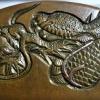


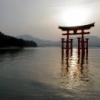
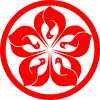







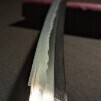

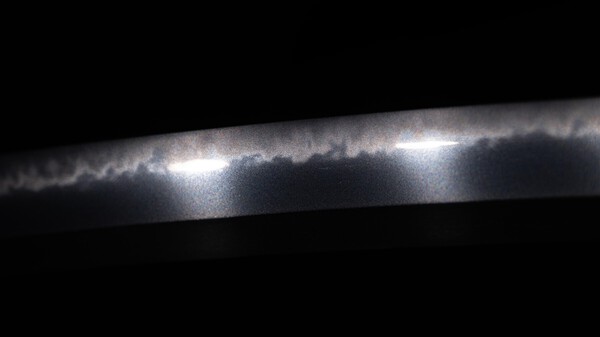
















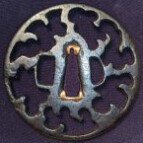





.thumb.jpg.74506f7c9640c886c73572d7b854e2f0.jpg)
